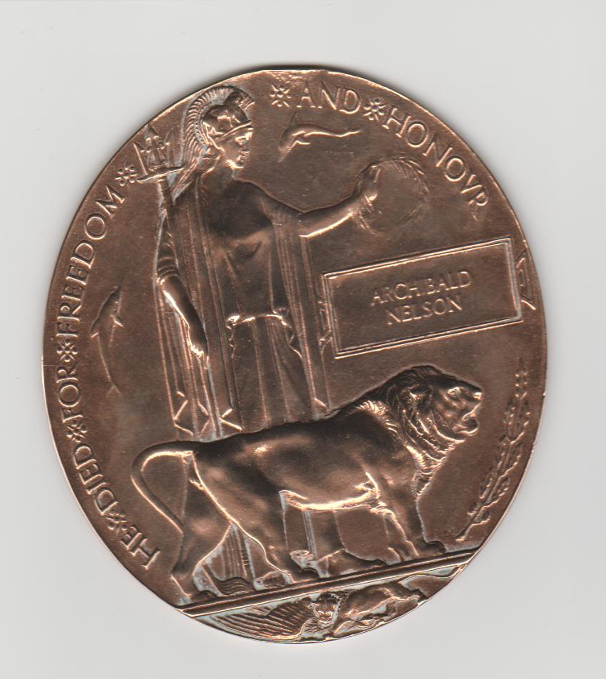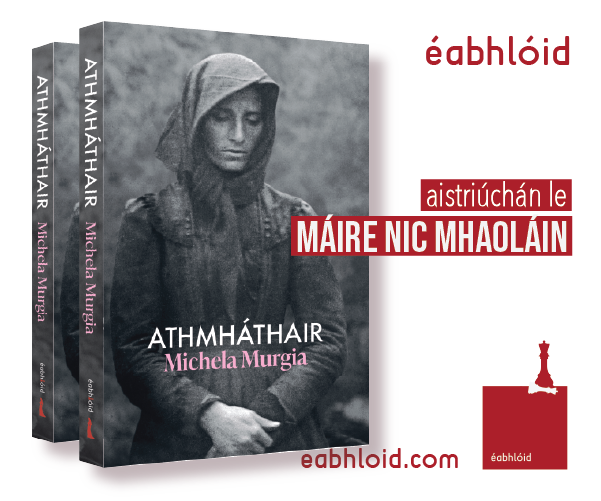Pat Dargan on the WWI memorial plaque and tracing Archibald Nelson.

An example of a Widow’s Penny was recently shown to the writer, inscribed with the name Archibald Nelson (Fig. 1). This was a bronze memorial plaque issued to the next of kin of British soldiers who were killed or died in the First World War. These plaques were commonly referred to as a Widow’s Penny because of their resemblance to the much smaller penny coin of the period, and carried images, including the British Lion and the figure of Britannia, as well as the name of the deceased. The owner’s family had been given the plaque by a now-deceased friend. They knew little about Archibald Nelson and were anxious to discover some information about him, particularly the part he obviously played in the Great War. This was achieved by researching a range of historical material, including the 1911 Irish Census, the history of the South Irish Horse Regiment, the British Army Medals Rolls, and the Commonwealth War Graves Commission.
1911 Census
The 1911 census offered a wealth of information on Archibald Nelson. He was listed as 46 years of age, married to Catherine Nelson. He had one son, also called Archibald, and lived at 51 Mount Street Lower, Dublin. Nelson was listed as born in Dublin, but, significantly, the census gave Nelson’s occupation as Regular Sergeant Major in the South Irish Horse (Fig. 2).

The South Irish Horse
The South Irish Horse was formed in 1902 as a cavalry regiment that differed from most regiments in the British army of the period in that the members were part-time soldiers, who paraded once a week or so, and attended full military training for a few weeks each year (Fig. 3).

The initial name of the regiment was the South of Ireland Imperial Yeomanry, although this was later changed to the South Irish Horse. The unit was organised into troops stationed in Dublin, Cork and Limerick, with the headquarters in the Limerick Artillery Barracks. In addition to the part-time members, each contingent had a small administrative staff of permanent officers and non-commissioned officers. The South of Ireland Imperial Yeomanry Club Gazette, of around 1910, listed Archibald Nelson as the Staff Regimental Sergeant Major and that he and a number of other non-commissioned officers had previously served in the 8th Royal Irish Hussars, a regular cavalry regiment, before being transferred to the South Irish Horse. According to the 8th Hussars Diary of the South African War, Quartermaster Sergeant A. Nelson of the Hussars departed the Curragh Camp for South Africa in February 1900 and the likelihood is that he was transferred to the permanent staff of the South Irish Horse around 1908 and promoted to Regimental Sergeant Major.
Medals Rolls Index Cards 1914–20
The British Army WWI Medals Rolls Index Cards 1914–20 lists the British soldiers who served in the First World War and provides details of the medals they were awarded. Nelson’s card shows he served in the South Irish Horse from around 1908 and was discharged in 1918. He did not, however, qualify for any medals. The reason for this was that only soldiers who served outside the British Isles in the First World War were entitled to service medals. The South Irish Horse was one of the first Irish units to fight in Flanders in 1914, but Nelson remained in Haddington Road Barracks, on the South Circular Road in Dublin, attached to the regimental headquarters staff. The card also notes that he was discharged from the army as he was no longer physically fit for military service in December 1918 and died in his home in Mount Street Lower of heart disease on 18 September 1919.
Grangegorman Military Cemetery
Staff Sergeant Major Nelson was buried in Plot Pres 95, Grangegorman Military Cemetery, Dublin. In an unusual instance, Archibald’s wife Catherine was also buried in the same plot when she died in 1950. The irony of Staff Sergeant Major Nelson’s military life was that although he served most of his working life as a soldier, such as in the Boer War, he missed action in the First World War conflict and died at his home from heart disease.
- Fig. 1. The Widow’s Penny memorial plaque issued to Catherine, widow of Staff Regimental Sergeant Major Archibald Nelson.
- Fig. 2. The 1911 Census lists Archibald Nelson as being a Regimental Sergeant Major in the South Irish Horse.
- Fig. 3. The regimental cap badge of the South Irish Horse features the raised SIH initials on a shamrock.
Pat Dargan is an academic and author. His latest work is Kilkenny: city of heritage; 9781916137516; €16.99 (Eastwood Books). Available now.













